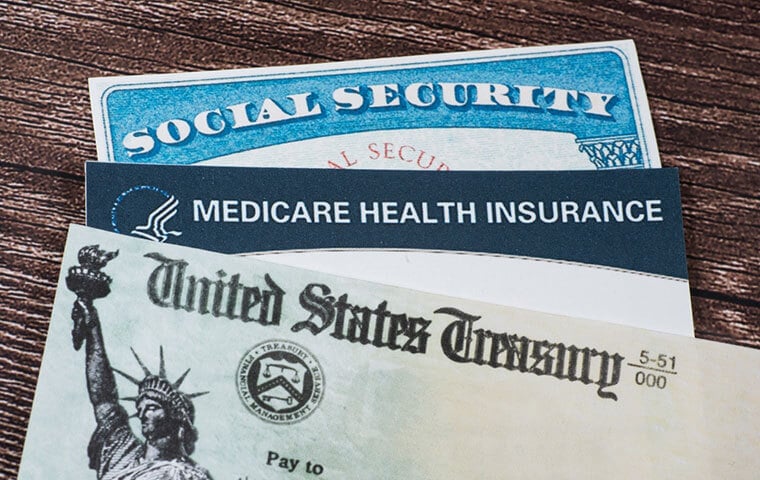 The standard Medicare Part B (physicians and related services) premium will be will be $185 per month for most enrollees. Image: Rix Pix Photography/Shutterstock.com
By: FEDweek Staff
The standard Medicare Part B (physicians and related services) premium will be will be $185 per month for most enrollees. Image: Rix Pix Photography/Shutterstock.com
By: FEDweek StaffSeveral key figures are increasing for 2025 in the Social Security program affecting both current employees and retirees.
Social Security—For active employees, the 6.2 percent Social Security payroll tax will apply on up to of $176,100 earnings, up from $168,600. For FERS employees, that tax cuts off at that threshold and from there on they pay only the civil service retirement contribution (which is either 0.8, 3.1 or 4.4 percent, depending on when they were hired).
Above the cutoff, CSRS Offset employees continue to pay their same 7 percent total (6.2 into Social Security and 0.8 into the federal retirement fund) but all the money after that point goes into the federal retirement fund instead. Employees under “pure” CSRS don’t pay the Social Security payroll tax.
For those drawing Social Security benefits, the earnings test applying to beneficiaries aged 62 through that program’s “full” retirement age (66 and ten months, for those starting to draw benefits in 2025), will rise to $23,400 from $22,320. Those beneficiaries lose $1 in Social Security benefits for every $2 in earnings through employment or self-employment above the limit.
A separate earnings test applies only to earnings for months in the year an individual reaches full retirement age but prior to the individual attaining that age. One dollar in benefits will be withheld for every $3 in earnings above $62,160, up from $59,520. There is no limit on earnings beginning the month an individual attains full retirement age.
Medicare—The standard Medicare Part B (physicians and related services) premium will be will be $185 per month for most enrollees, up from $174.40 a month. Those with annual taxable incomes above a threshold (which will be $106,000 for single filers and $212,000 for joint filers) also pay surcharges, ranging up to a total cost of $552.10.
The Part B annual deductible is increasing by $17 to $257.
In Part A, which covers hospitalization and related costs, the deductible will rise to $1,676, an increase of $44. Proportionate boosts also will apply to coinsurance for periods longer than 60 days per benefit period: for the 61st through the 90th day in a benefit period, to $419 per day, and beyond the 90th day, to $838 per day.
Costs for Part D prescription drug coverage are part of premiums under the Postal Service Health Benefits program for postal retirees beginning in 2025. Federal retirees remaining in the FEHB, the premium will average about $45, although there is variation among plans, and a surcharge of up to $85.80 applies to higher-income retirees. However, federal retirees who have FEHB coverage typically do not enroll in Part D because prescription drug coverage is part of FEHB plan premiums.
Senate Eyes Vote to Pay Federal Employees Working Unpaid
Series of Bills Offered to Address Shutdown’s Impact on Employees
Public Starting to Feel Impact of Shutdown, Survey Shows
OPM Details Coverage Changes, Plan Dropouts for FEHB/PSHB in 2026
Does My FEHB/PSHB Plan Stack Up? Here’s How to Tell
2025 TSP Rollercoaster and the G Fund Merry-go-Round
See also,
TSP Takes Step toward Upcoming In-Plan Roth Conversions
5 Steps to Protect Your Federal Job During the Shutdown
Over 30K TSP Accounts Have Crossed the Million Mark in 2025

